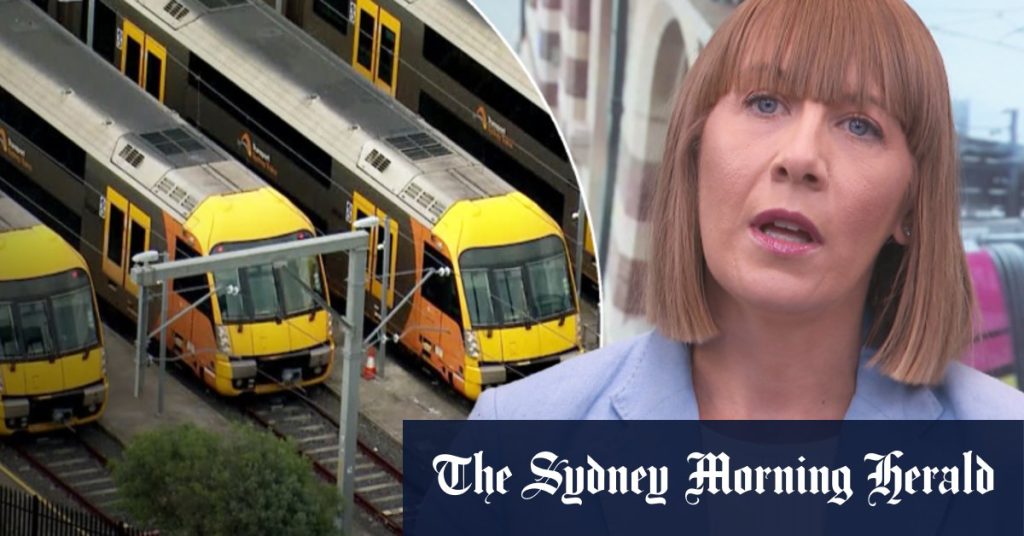The New South Wales (NSW) rail network experienced two days of industrial action, causing significant disruption to commuters. The dispute centers around a disagreement between the NSW government and the rail unions regarding a new enterprise agreement. Key sticking points include wages, working conditions, and safety concerns related to the New Intercity Fleet (NIF). Following the industrial action, the unions presented a counter-offer to the government, aiming to resolve the ongoing dispute and avert further disruptions. While the specifics of the counter-offer remain undisclosed, it signals a willingness from the unions to negotiate and find common ground. The government had been preparing for legal action to prevent future industrial action, but the counter-offer may open a new avenue for negotiation and a potential resolution. The situation remains fluid, with both parties needing to carefully consider their next steps.
The strained relationship between the NSW government and rail unions has been simmering for some time, with the NIF acting as a major catalyst. The unions argue that the new fleet poses safety risks and requires modifications before being put into service. They also raise concerns about job security and the potential impact of automation on their members. The government, on the other hand, maintains that the NIF is safe and represents a crucial investment in modernizing the rail network. This fundamental disagreement over the NIF has fueled the broader dispute over the enterprise agreement, complicating negotiations and increasing tensions between the parties. The government’s threat of legal action underscores the seriousness of the situation and the potential for further escalation if a resolution cannot be reached.
The two days of industrial action significantly impacted commuters, causing widespread delays and cancellations across the rail network. This disruption highlights the critical role of rail transport in NSW and the consequences of breakdowns in negotiations between the government and unions. The industrial action also underscores the importance of finding a sustainable solution that addresses the concerns of both parties, ensuring the long-term stability and efficiency of the rail network. The disruption caused by the industrial action likely prompted both sides to reconsider their positions and explore avenues for compromise, leading to the unions’ counter-offer. The public pressure resulting from the disruption played a crucial role in encouraging a return to the negotiating table.
The counter-offer presented by the rail unions represents a potential turning point in the dispute. While the details of the offer remain confidential, it suggests a willingness to compromise and engage in constructive dialogue. The government now faces the decision of whether to accept the counter-offer, reject it outright, or use it as a basis for further negotiations. The response of the government will be crucial in determining the future course of the dispute and whether a mutually acceptable agreement can be reached. The potential for further industrial action remains if the government rejects the counter-offer, underscoring the importance of careful consideration and a genuine commitment to resolving the outstanding issues.
The government’s prior preparations for legal action indicate its determination to prevent further disruptions to the rail network. However, the unions’ counter-offer may provide an alternative path forward, allowing for a negotiated settlement rather than a protracted legal battle. Legal action can be costly and time-consuming, and it often exacerbates tensions between parties. A negotiated agreement, on the other hand, offers the opportunity to address the underlying concerns of both sides and build a more constructive relationship for the future. The government will need to weigh the potential benefits and risks of pursuing legal action versus engaging in further negotiations based on the unions’ counter-offer.
The ongoing dispute between the NSW government and rail unions highlights the complex challenges involved in balancing the interests of various stakeholders in public transport. The government has a responsibility to ensure the efficient and reliable operation of the rail network, while the unions have a duty to protect the rights and interests of their members. Finding a solution that addresses the concerns of both parties requires open communication, a willingness to compromise, and a commitment to finding common ground. The current situation presents an opportunity for both sides to demonstrate leadership and work towards a resolution that benefits all stakeholders, including the commuting public, who ultimately bear the brunt of disruptions to the rail network. The future stability of the NSW rail system hinges on the outcome of these negotiations.

